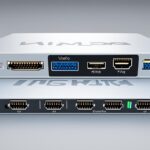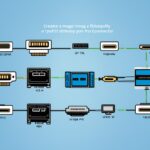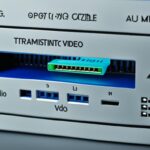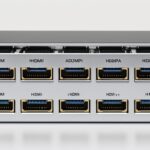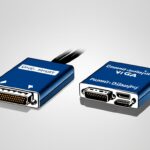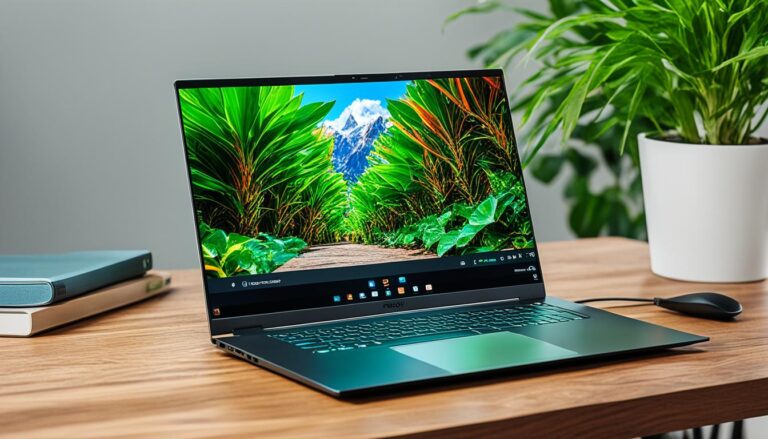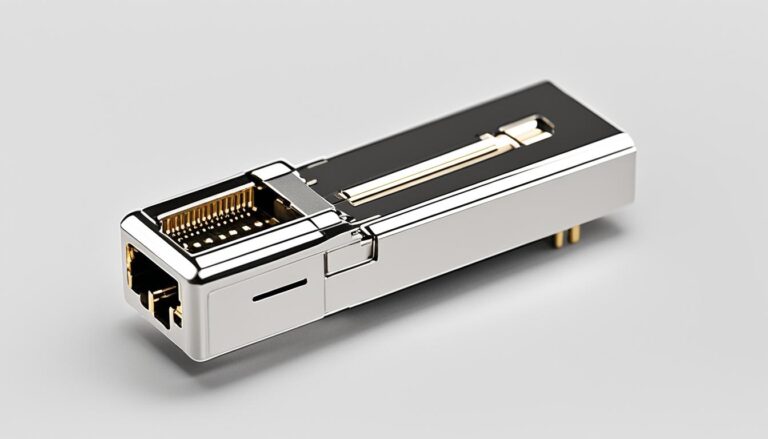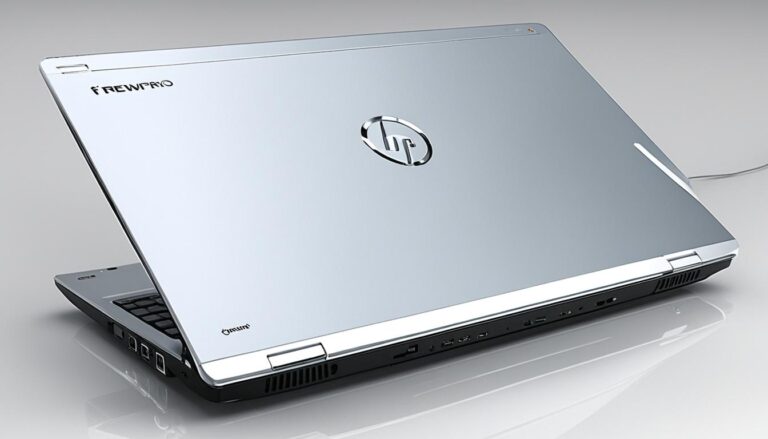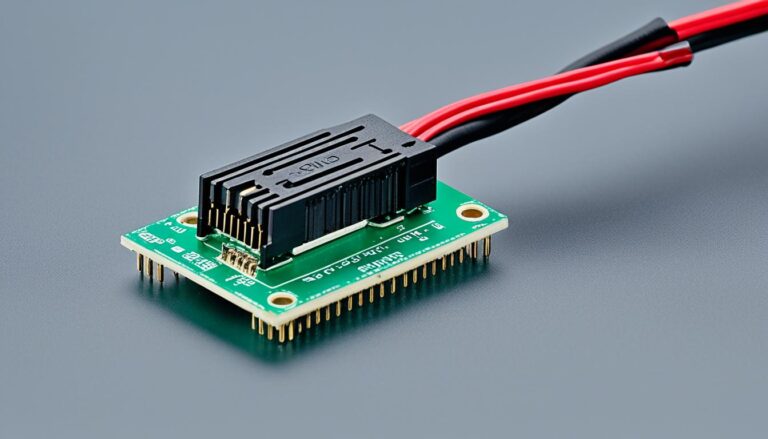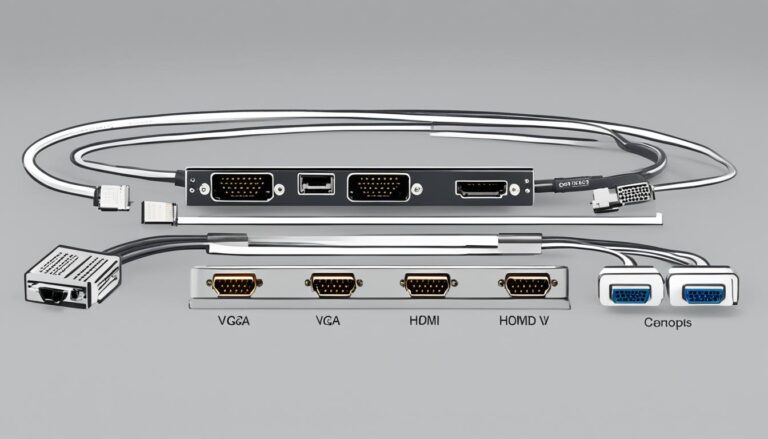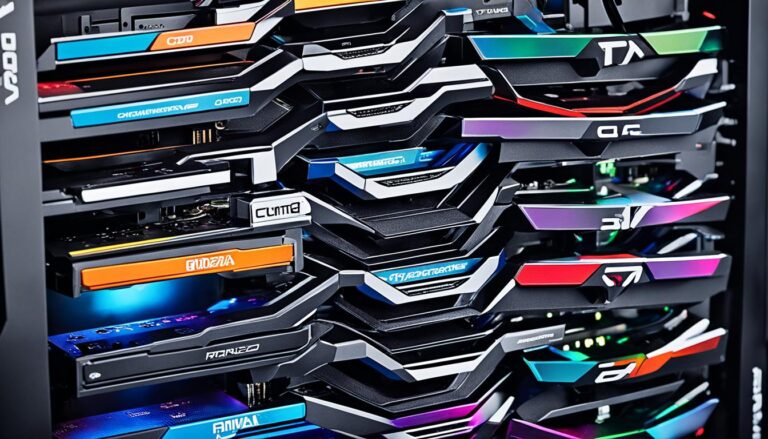When setting up your display system, knowing the video connections is key. There’s a range of ports and interfaces, each with pros and cons. Selecting the right one matters for your needs. Let’s dive into the different video connections and their main features.
HDMI: The Standard for Audio and Video Transmission
HDMI stands for High Definition Multimedia Interface. It’s a popular video connection used everywhere. It sends both sound and picture. This makes it perfect for linking TVs to computers or other devices. The quality of sound and picture is top-notch, offering a smooth experience.
HDMI is great as it works with many devices. These include TVs, gaming consoles, and Blu-ray players. It makes connecting devices easy and flexible. Whether you’re watching films, gaming, or catching up on series, HDMI brings sharp images and great sound.
The cables for HDMI can be quite long, up to 25-30 meters. This means you can set up your systems however you like. You can place your devices far apart if needed.
Over time, HDMI has gotten better and better. The newest version, HDMI 2.1, boosts the quality even more. It has features like Variable Refresh Rate (VRR) and Auto Low Latency Mode (ALLM). These make gaming smoother. They ensure you get the best experience, with no delays.
HDMI is now the go-to for connecting devices for both audio and video. It’s trusted and ensures high quality. Your movies and music will look and sound amazing.
“HDMI is the go-to choice for connecting your TV to a PC or other devices, offering seamless audio and video transmission.”
Benefits of HDMI:
- Transmits both audio and video signals
- Compatible with various devices
- Supports high-quality audio and video playback
- Long length of cabling (up to 25-30 meters)
Latest HDMI Version: HDMI 2.1
HDMI 2.1 improves your viewing a lot:
- Higher resolutions: Enjoy content in 4K, 8K, and even higher resolutions
- Variable Refresh Rate (VRR): Smooth gaming with reduced screen tearing
- Auto Low Latency Mode (ALLM): Minimize input lag during gaming
HDMI vs. Other Video Connection Types
| Video Connection Type | Audio and Video Transmission | Device Compatibility | Length of Cabling |
|---|---|---|---|
| HDMI | ✓ | ✓ | 25-30 meters |
| DisplayPort | Varies | ✓ | Up to 15 meters |
| DVI | No | Varies | 5-15 meters |
| VGA | No | Varies | Up to 5 meters |
HDMI beats other video connections. It can send both sound and picture, works with lots of devices, and has long cables. While other connections have their uses, HDMI is the best choice for most setups.
DisplayPort: A Powerful Connector for Audio and Video Signals
DisplayPort is a top pick for video connections. It sends high-quality audio and video over long cables. This makes it great for many setups.
It’s commonly seen on desktop monitors, especially where top-notch visuals are needed. DisplayPort is perfect for jobs that need sharp images and clear detail.
DisplayPort uniquely carries both video and stereo audio. This means you get great sound and visuals whether you’re gaming, watching videos, or working with multimedia. It offers a smooth experience.
Though not as common as HDMI, DisplayPort is becoming more popular on computers and monitors. Thanks to its excellent compatibility and performance, people who want superior audio and video pick DisplayPort.
Showcasing DisplayPort’s Benefits
Thinking about DisplayPort? Here are its main benefits:
- Supports high resolutions: Handles up to 8K video, offering incredible quality and detail.
- Longer cabling: Its long cables allow for flexible setups and easy device placement.
- Robust audio transmission: Supports many audio formats for clear and immersive sound.
- Professional-grade performance: Trusted in professional settings for its reliability and high performance.
With these features, DisplayPort stands out as a strong choice for handling audio and video. It’s especially good for situations that need high resolution and long cables.
Next up: DVI and VGA – Legacy Video Connectors
DVI and VGA: Legacy Video Connectors
DVI (Digital Visual Interface) and VGA (Video Graphics Array) were once popular. They connected video devices in older systems. Now, HDMI and DisplayPort have mostly taken their place in newer setups. Some devices still have DVI and VGA. But, they are now called legacy connectors.
DVI was used for high-quality video in older tech. It worked well for 1080p videos at high frequencies. But HDMI and DisplayPort’s rise made DVI less common in new devices.
VGA connected to older CRT displays. It was great back then but isn’t much used now. VGA can’t match DVI or HDMI in resolution, making it less ideal for today’s high-definition screens.
Why are DVI and VGA considered legacy connectors?
HDMI and DisplayPort have largely replaced DVI and VGA. The new connectors handle both audio and video. They support higher resolutions too. So, DVI and VGA have become outdated.
Still, DVI and VGA are useful in some cases. Older tech might need them. Certain professions also depend on these older connectors.
| Connector | Advantages | Limitations |
|---|---|---|
| DVI | – Video-only transmission for higher frequencies at 1080p – Compatible with older systems – Supports longer cable lengths compared to VGA |
– Does not support audio transmission – Being phased out by HDMI and DisplayPort |
| VGA | – Compatibility with older CRT displays – Cost-effective solution for lower resolutions |
– Analog signal prone to interference – Limited support for higher resolutions – Being phased out by digital connections |
DVI and VGA might not be common in new setups. Yet, they fit specific needs. HDMI and DisplayPort, however, give better sound and picture. They are preferred for connecting modern devices to displays.
Conclusion
There are a few different video connection types available, each with its own pros and cons. HDMI and DisplayPort are top choices, known for their excellent audio and video quality. DVI and VGA are older options but still useful for some devices. The newest members of the video connection family, USB-C and Thunderbolt, bring extra versatility and functions.
Choosing the best video connection depends on what you need. It matters what devices you’re connecting and what quality you want. Make sure your devices are compatible with the cable you pick to get the best performance.
Setting up a home cinema or linking your computer to a monitor requires knowledge of video connections. Think about things like resolution, sound quality, and whether your devices will work together. This way, you can have a great watching experience with top-notch audio and video.
FAQ
What are video connection types?
Video connection types are the different ports and interfaces. They let devices connect and share audio and video signals.
What is HDMI?
HDMI stands for High Definition Multimedia Interface. It’s common and widely used. HDMI sends audio and video. It’s perfect for connecting TVs to PCs and other devices.
What are the advantages of HDMI?
HDMI offers high-quality audio and video. Cables can be up to 25-30 meters long. It works with many devices such as TVs, game consoles, and Blu-ray players.
What is DisplayPort?
DisplayPort is liked for its high-resolution audio and video. It’s found on desktop monitors and used in professional settings.
What are the advantages of DisplayPort?
DisplayPort handles very high resolutions and audio. Its cables can be long, fitting various arrangements.
What are DVI and VGA?
DVI and VGA are older connection types. HDMI and DisplayPort have mostly replaced them. DVI is for video only. VGA, an analog connector, was used with CRT displays.
Are DVI and VGA still used?
DVI and VGA are seen on some devices. But, they’re legacy connectors and not often used now.
How do I choose the right video connection type?
The choice depends on your needs. This includes the devices you’re linking and what resolution and audio you want. Make sure your devices are compatible with the monitor cable type for the best performance.






